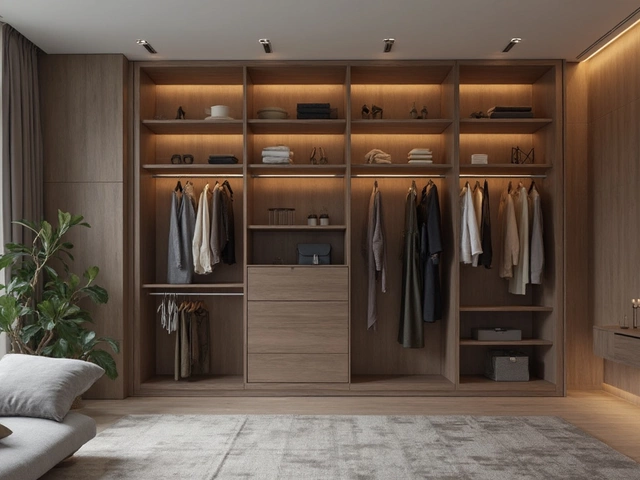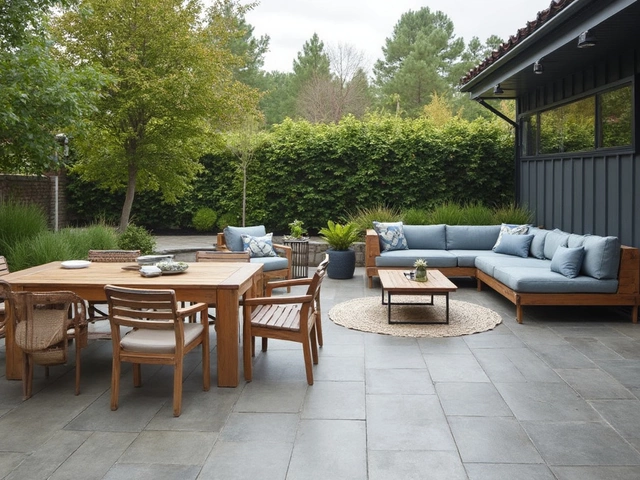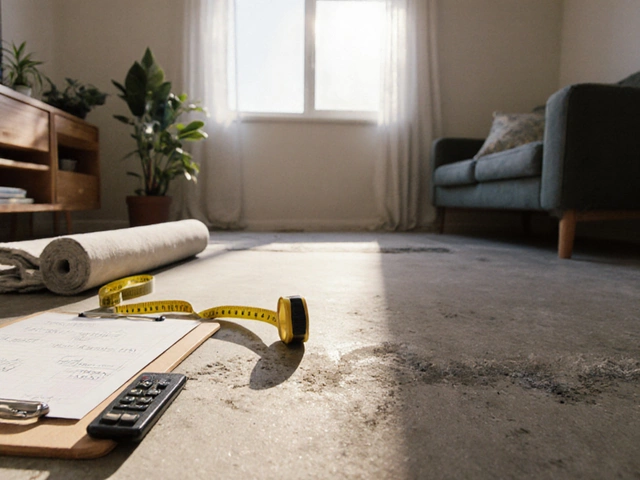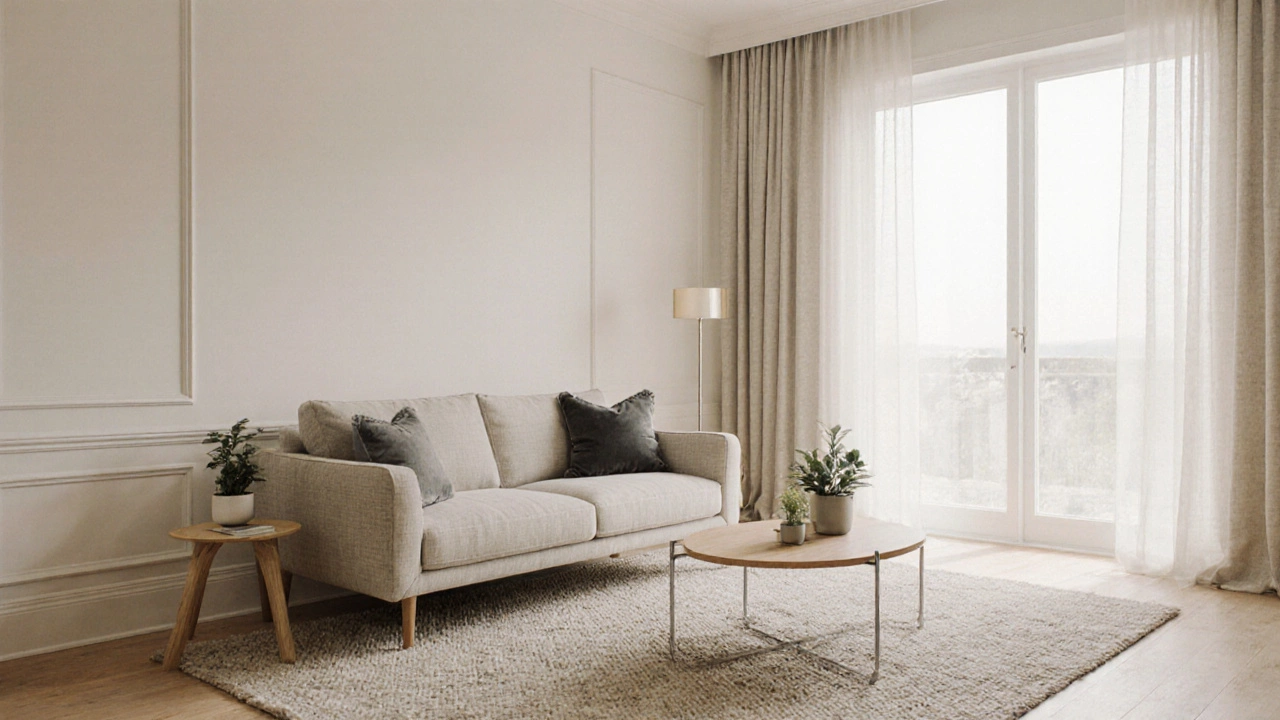
Luxury Home Upgrade Cost Calculator
Estimate Your Luxury Upgrade Costs
Calculate how much your home upgrades will cost and how much they'll increase your home's perceived value. Based on the article's budget-friendly luxury tips.
Total Estimated Cost
$0
Perceived Value Increase
0%
ROI (Cost vs. Value)
$0
Pro Tip: For a 5-10% budget increase, focus on 2-3 high-impact upgrades from the article's checklist.
When you aim to make your house look expensive, the goal isn’t to splurge on every item but to use smart design tricks that scream luxury. Luxury Home Styling is the art of creating a high‑end look without the price tag. Below are practical steps that anyone can follow, whether you live in a city apartment or a suburban home.
Start with a Neutral Color Palette
A muted backdrop lets furniture and accessories shine. Neutral Color Palette is a range of soft whites, greys, and beiges that create a sophisticated canvas. Paint walls in warm ivory or cool greige, then layer in subtle textures - a linen sofa, a wool rug, or a silk curtain. The trick is to keep the base consistent; this visual continuity makes the space feel larger and more curated.
- Choose paint with a low sheen to avoid glare.
- Sample colors in natural light before committing.
- Use the same hue on ceilings and trim for a seamless look.
Neutral walls also serve as a backdrop for bold accents later on, amplifying their impact.
Upgrade to Statement Lighting
Light fixtures are instant style elevators. Statement Lighting is an eye‑catching chandelier, pendant, or floor lamp that adds drama and focus. Opt for metallic finishes like brushed brass or matte black. A single oversized pendant over the kitchen island or a crystal chandelier in the dining area instantly signals upscale taste.
- Pick a size proportional to the room - the larger the space, the bolder the fixture.
- Layer lighting: ambient, task, and accent to create depth.
- Consider dimmers for a luxurious, adaptable ambiance.
Lighting not only illuminates but also defines the mood, making everyday moments feel special.
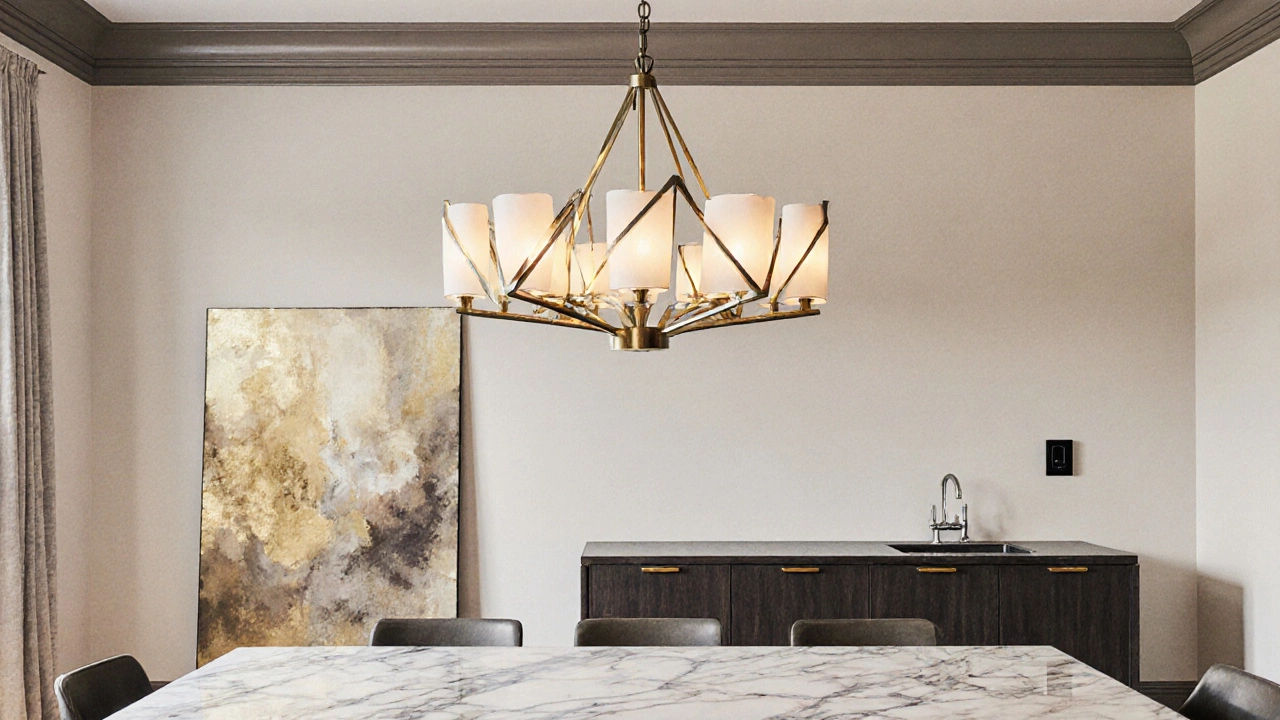
Invest in Quality Textiles
Soft, high‑quality fabrics add tactile richness. Quality Textiles are premium rugs, throws, cushions, and curtains that elevate comfort and visual appeal. A well‑chosen rug can anchor a room, while plush cushions introduce color without overwhelming the neutral base.
- Select natural fibers - wool, linen, silk - for durability and elegance.
- Mix textures: a velvet cushion on a leather sofa creates contrast.
- Stick to a restrained palette; let patterns be subtle.
Even a modest price tag on a high‑quality rug can transform the perception of a floor from plain to polished.
Add Architectural Molding
Trim and crown molding give a finished look that suggests custom work. Architectural Molding is decorative strips of wood or plaster applied to walls, ceilings, and doors to add depth and detail. If you’re renting, peel‑and‑stick molding offers a reversible solution.
- Choose simple baseboard profiles for modern homes.
- Install crown molding in living and dining rooms to draw the eye upward.
- Paint molding the same color as walls for subtlety, or a darker shade for contrast.
These details create the illusion of craftsmanship without the cost of a full remodel.
Upgrade Hardware Accents
Small hardware changes have a huge impact. Hardware Accents are door handles, cabinet pulls, and faucet fixtures that serve as mini‑luxury statements. Swap out plain brass knobs for matte black or polished chrome ones. Even a sleek faucet in the bathroom can feel boutique‑grade.
- Match finish across the home for cohesion.
- Prioritize durability - stainless steel lasts longer than cheap alloys.
- Focus on high‑traffic areas for maximum visual ROI.
The cumulative effect of upgraded hardware reads as intentional design rather than haphazard DIY.
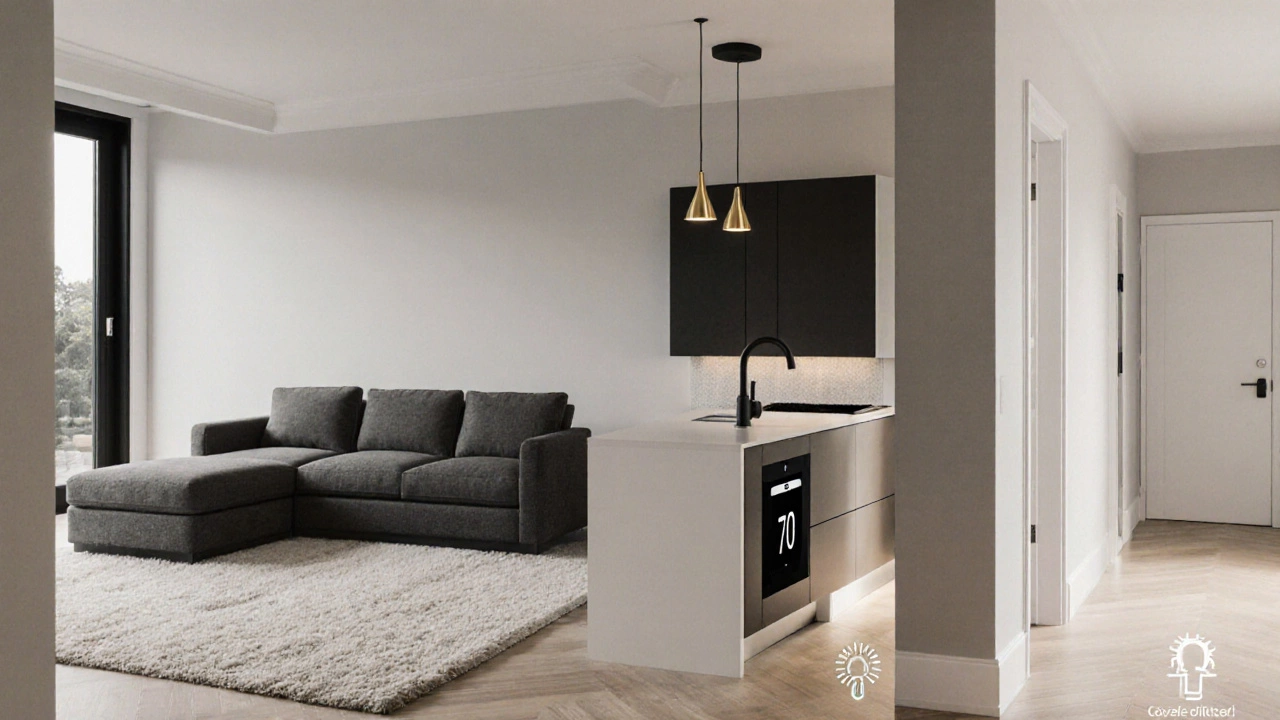
Curate Art and Wall Decor
Art makes a space feel personal and upscale. Curated Artwork is thoughtfully selected paintings, prints, or sculptures that reflect style and add visual weight. You don’t need originals from famous artists; high‑quality reproductions or local pieces framed in simple, uniform frames work wonders.
- Choose one large statement piece over a cluttered gallery wall.
- Stick to a limited color scheme that echoes the room’s palette.
- Place art at eye level - roughly 57 inches from the floor.
A well‑placed canvas can instantly raise the perceived value of a room.
Integrate Smart Home Technology
Tech adds a layer of sophistication that feels modern and luxurious. Smart Home Technology is connected devices like voice‑controlled lighting, thermostat, and security systems that enhance convenience and style. A smart dimmer switch lets you adjust ambience without a separate lamp. Voice‑activated speakers double as decorative objects.
- Start with a smart hub that integrates multiple devices.
- Choose sleek designs - white or black units blend into décor.
- Program scenes (e.g., "Dinner" or "Movie Night") to automate lighting and music.
Even subtle tech integration signals that you invest in quality living experiences.
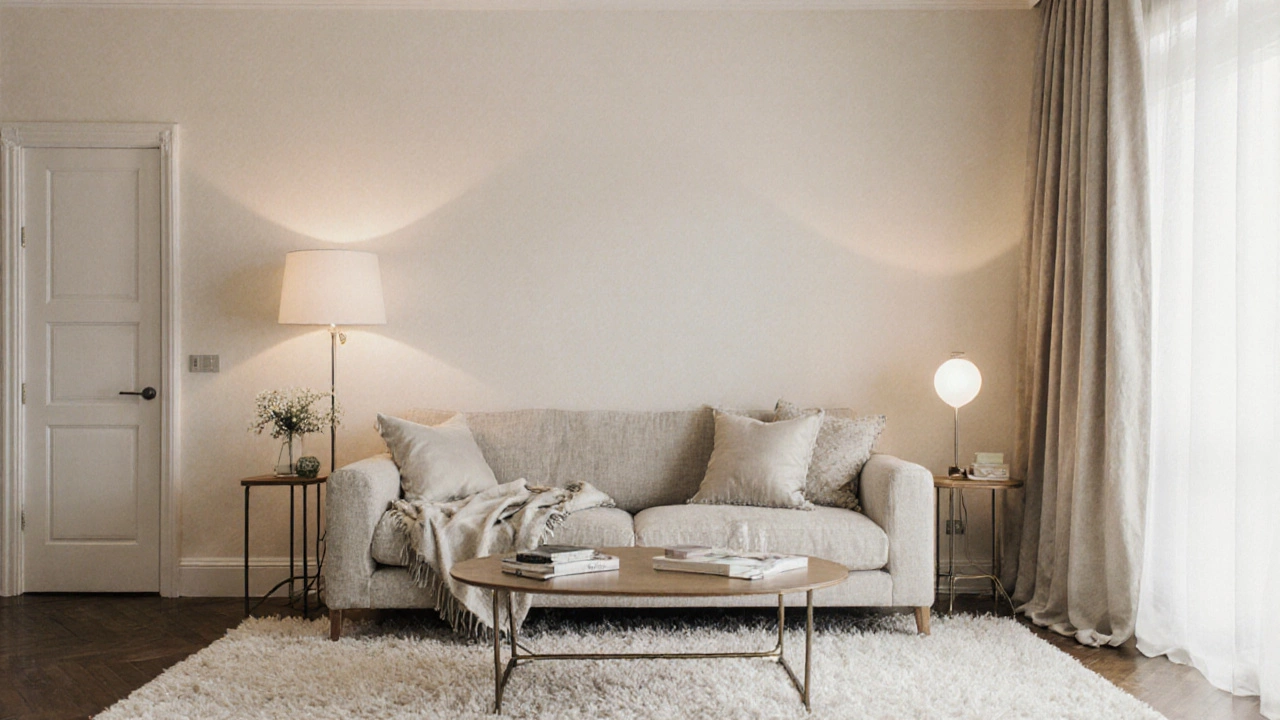
Maintain a Minimalist Layout
Clutter dilutes the sense of luxury. Keep furnishings to a curated selection; each piece should serve a purpose and have visual weight. Arrange furniture with clear pathways, allowing the eye to travel freely. A tidy, open layout feels like a designer’s touch.
- Remove excess décor - less is more.
- Use hidden storage (e.g., ottomans with interior compartments) to keep surfaces clear.
- Balance scale - a low sofa with a tall bookshelf creates visual harmony.
The goal is to make the space breathe, reinforcing the high‑end vibe.
Quick Checklist for an Expensive Look
- Paint walls in a neutral, low‑sheen hue.
- Install one statement light fixture per main room.
- Introduce at least two high‑quality textile pieces (rug, cushions).
- Add simple crown molding or baseboards.
- Swap out hardware to matte black, brass, or chrome.
- Hang one large piece of curated artwork per wall.
- Integrate a smart lighting or thermostat system.
- Declutter and keep only essential furniture.
Follow these steps, and you’ll see a noticeable upgrade without blowing your budget.
| Material | Budget Option | Premium Option | Impact on Look |
|---|---|---|---|
| Flooring | Laminate with wood‑grain finish | Engineered hardwood | Both look wood, but hardwood adds depth and durability. |
| Rug | Polypropylene flatweave | Wool hand‑tufted rug | Wool feels plush and ages beautifully. |
| Lighting | Standard LED fixture | Brass pendant with dimmer | Brass adds a warm, upscale glow. |
| Hardware | Plastic knobs | Matte black metal pulls | Metal pulls convey intentional design. |
Frequently Asked Questions
Can I achieve a luxury look if I rent?
Absolutely. Focus on removable upgrades like peel‑and‑stick molding, statement lighting, high‑quality textiles, and temporary hardware swaps. All of these can be undone when you move out.
How much should I budget for a high‑end feel?
You can create a luxe vibe for as little as 5‑10% of your home’s total value by targeting key impact areas: paint, lighting, textiles, and hardware. Prioritize these over costly structural changes.
Should I go all‑white for a modern luxury look?
All‑white can be stunning but can feel sterile if not balanced. Pair white walls with warm wood tones, textured textiles, and metallic accents to keep the space inviting.
Is sleek hardware worth the extra cost?
Yes, because hardware is seen up close every day. A high‑quality knob or pull can instantly raise the perceived value of cabinets and drawers.
How do I keep the look cohesive across rooms?
Stick to a unified color palette, repeat key materials (like brass or wool) and use similar lighting styles throughout. Consistency signals intentional design.

